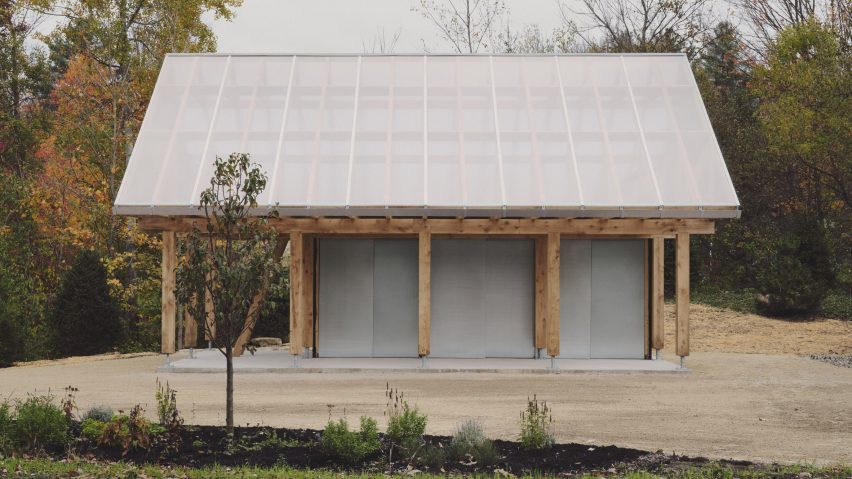
Atelier l'Abri embraces "expressive potential of construction" with Quebec shed
Local architecture studio Atelier l'Abri has created a shed at a Quebec farmhouse with a galvanized steel and hemlock timber structure.
Named Melba Pavilion, the 45-square-metre structure was designed as a workspace and storage for the surrounding Maison Melba property in Frelighsburg, which includes a residence, studio, workshop and greenhouse dedicated to sustainable agriculture.
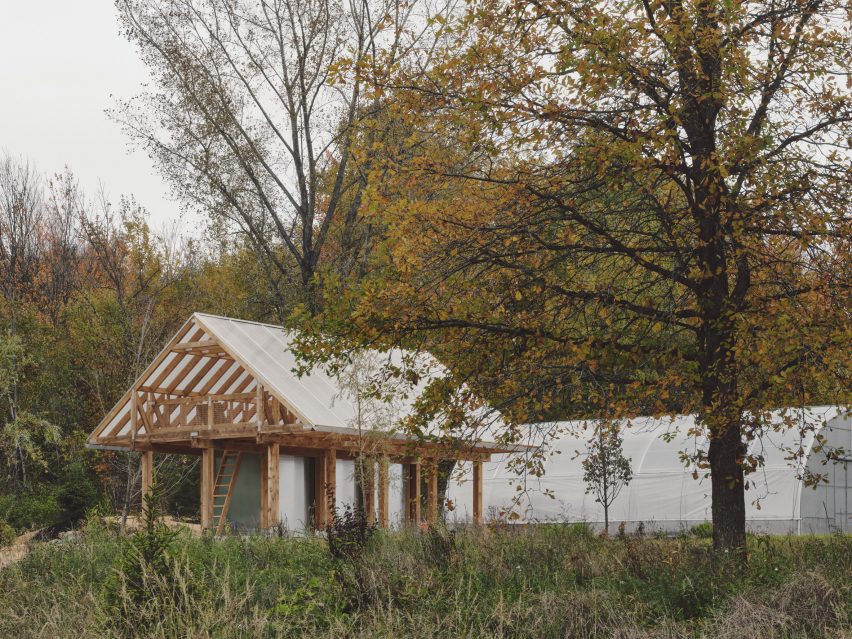
Located between the property's greenhouse and main house, the pavilion contains a central storage space, a lofted, open space for activities and an external workspace protected by generous eaves.
Its design was informed by the vernacular architecture of the area and emphasises "simplicity", according to Atelier l'Abri.
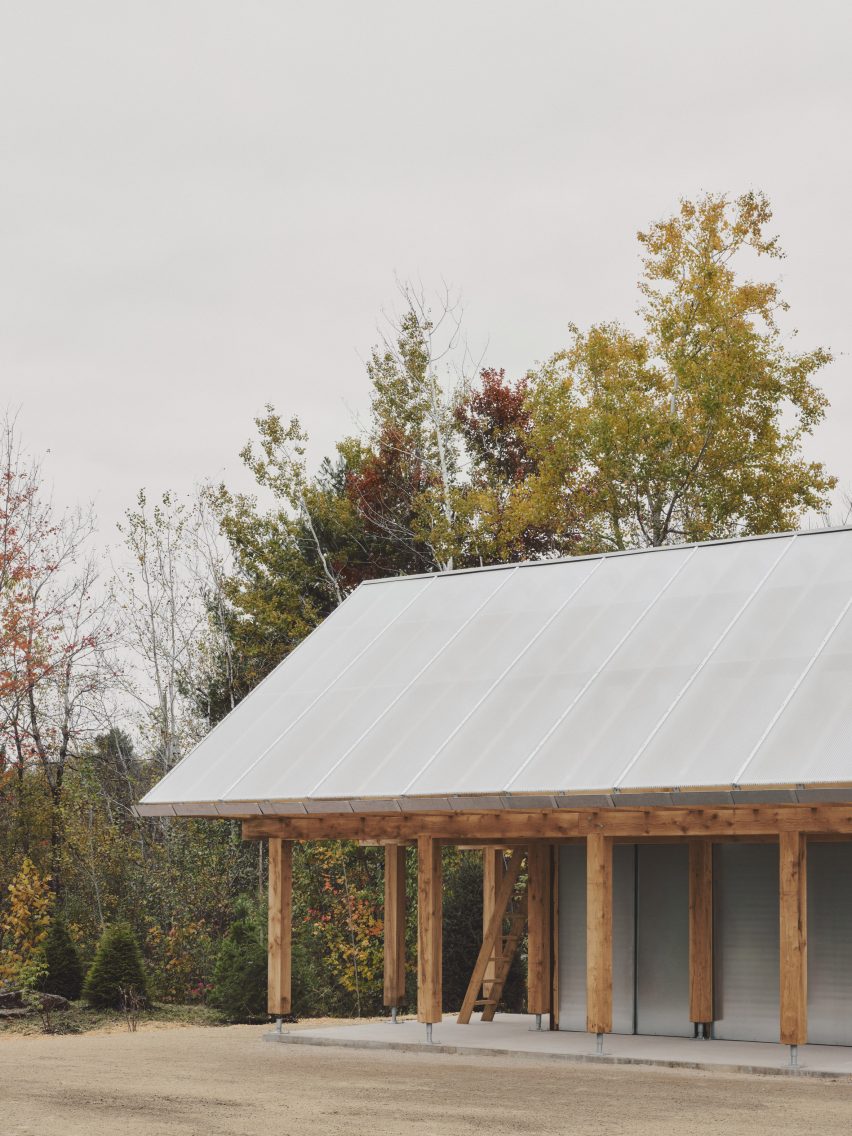
"The ideas behind the Melba Pavilion concept align with Kenneth Frampton's 'Studies in Tectonic Culture', with an emphasis on the expressive potential of construction and the importance of materials and their assembly in defining a building's character and impact," said the studio.
"[It] exemplifies simplicity and elegance through its use of readily available, cost-effective materials."
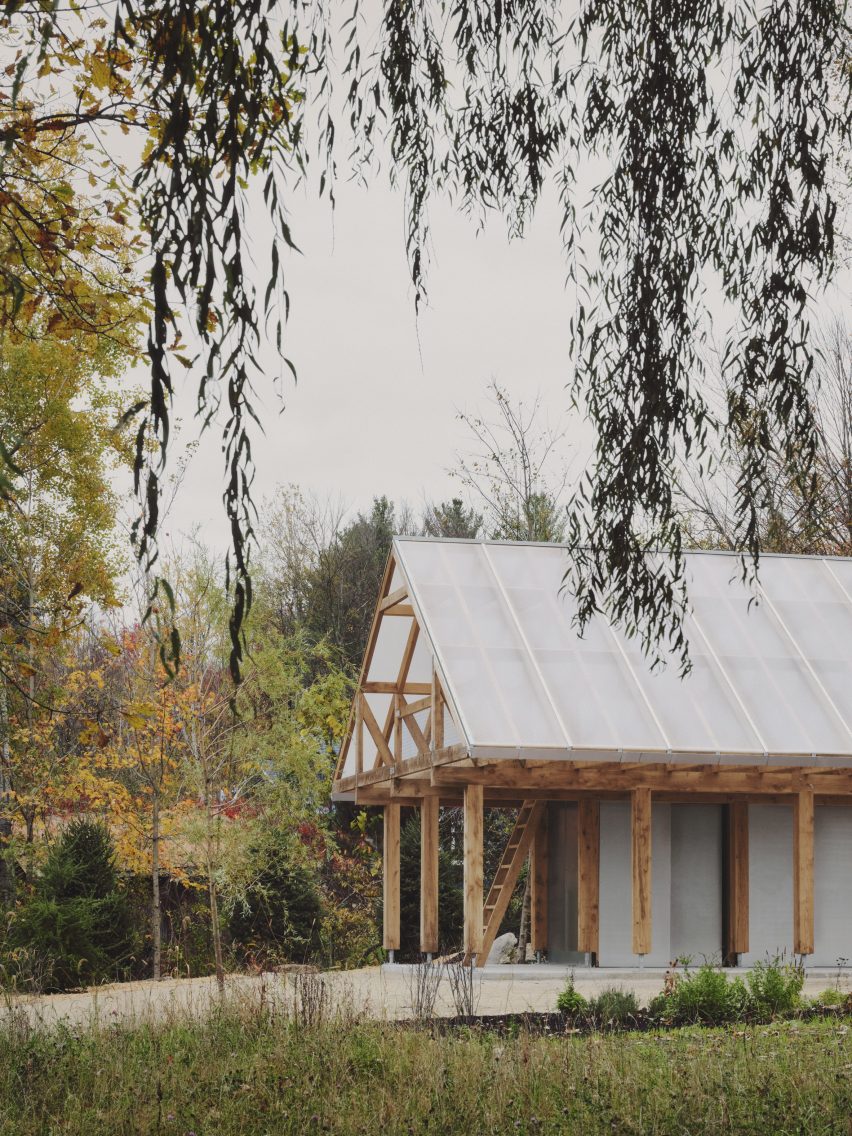
The building's exposed structure was made of local hemlock wood, with a large gabled roof that sits atop the storage space, which is wrapped in steel panels.
A series of beams fall down around the storage space, leaving significant space between them for working.
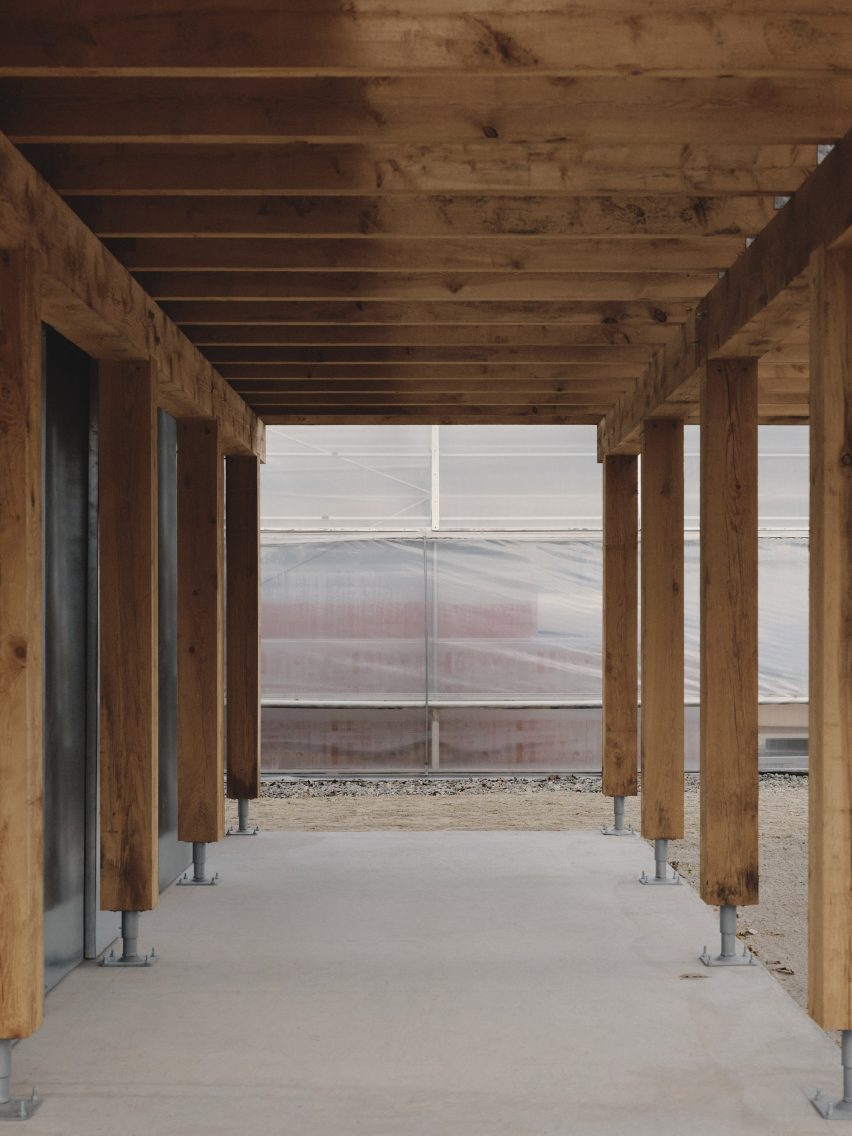
At the front of the building, a wooden ladder leads up to a semi-enclosed loft, covered by the roof's polycarbonate translucent panels and left open on the sides.
Steel decking and a trap door in the upper level look into the storage space below.
The loft space is marked by the building's rigorous structure, which forms a series of trusses informed by a residential building that was renovated on-site.
"The design is inspired by the rhythmic repetition of trusses that were stripped during the renovation work of the old home, resulting in a unique functional structure," said the studio.
"The pavilion's large timber frame, built from local hemlock wood, becomes a sculptural element in the landscape, establishing a connection between the garden and the main house."
Its oversized roof also takes notes from surrounding architecture and pays homage "to the roof as the prototypical form of shelter", according to the studio.
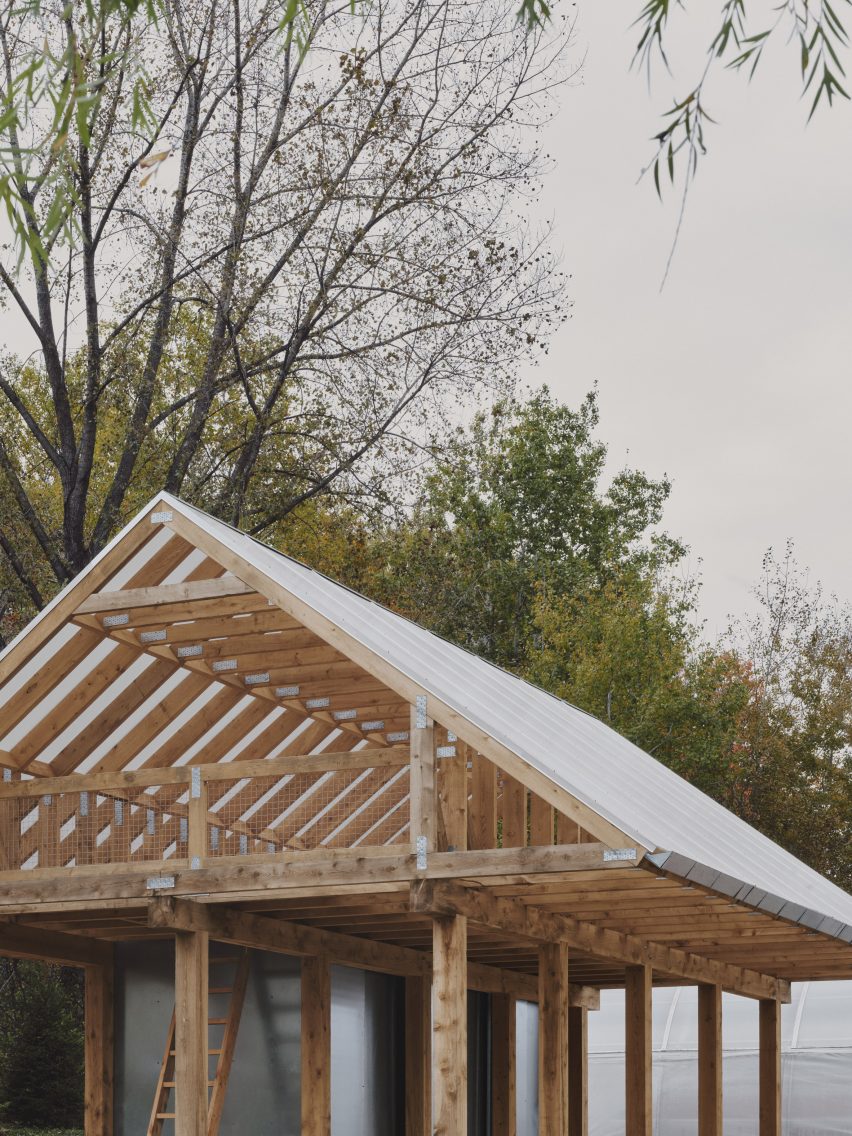
The studio used "raw and accessible" materials throughout the process in the pursuit of sustainable practices, mirroring initiatives throughout the surrounding property which is "soon-to-be" LEED Platinum-certified.
The property also "follows principles of ecological, edible, and regenerative landscaping", with landscape design by local landscape architecture studio Écomestible.
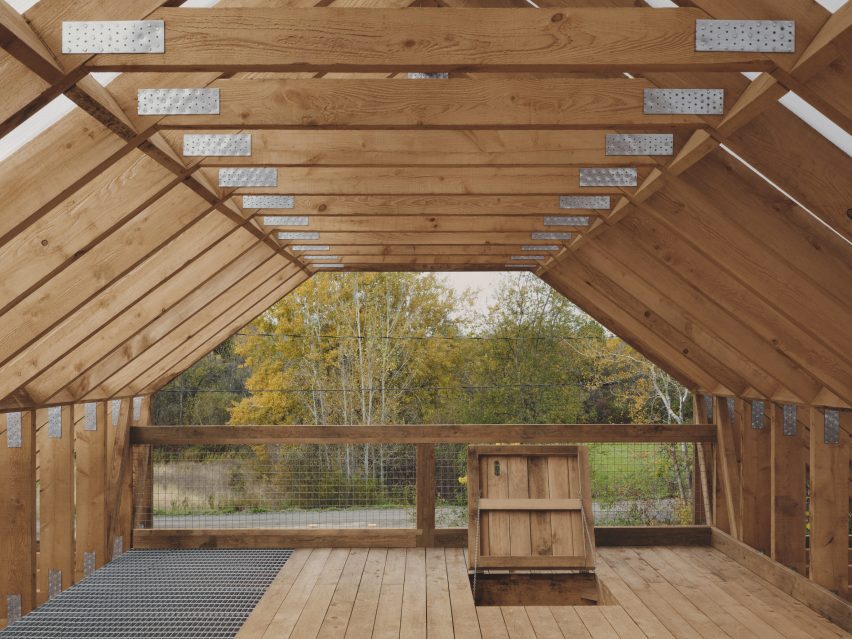
"It embodies the principles of sustainable beauty in proposing a unique design solution to celebrate the daily gardening activities that will contribute to the site's sustainability and self-reliance," said the studio.
"By promoting minimal construction practices and reducing environmental impact through the use of local low-carbon materials, the Melba Pavilion exemplifies a commitment to environmental stewardship and community well-being."
Elsewhere in Quebec, Atelier l'Abri recently completed several A-frame micro cabins and a "sculptural" chalet for a public park.
The photography is by Alex Lesage
Project credits:
Architecture: Atelier L’Abri
Project team: Pia Hocheneder, Jeth Owen Guerrero, Vincent Pasquier, Nicolas Lapierre, Francis Martel-Labrecque
Landscape architect: Écomestible
Contractor construction modulor engineers: Poincaré Ingénierie
Hemlock structure: Duhamel Sawmill
Roofing: Sabic (Lexan Thermoclear)
Connections: Rothoblaas
Metal work: Atomic Soudure, Multi-moulures
Landscaping: Braska
Permaculture landscape design: Écomestible